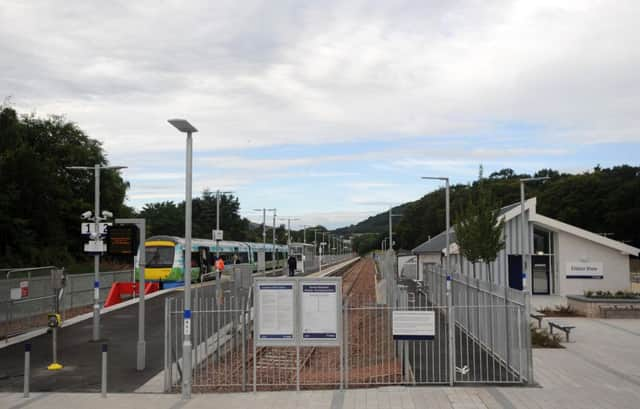Inside Transport: Let there be beauty in transport


Aesthetics don’t get much of a look-in during the design of new roads and railways - and the appreciation of how modern buses, trains and planes look is a pretty niche pursuit.
Too often in transport, it is all about function at the near total expense of form. The focus is on how to most effectively move people from A to B, with little regard to what it looks like.
Advertisement
Hide AdAdvertisement
Hide AdHowever, UK transport minister John Hayes broached the subject last week, highlighting the importance - and absence of beauty - which he said was rarely mentioned.
He called for an end to the “blind orthodoxy of ugliness” and the “soulless ubiquity” in road and railway building.
By contrast, the minister hailed the elegance of the extended King’s Cross station - a familiar gateway to London for many Scots.
He also announced the restoration of the long-mourned Euston Arch at that other great terminus for Scottish trains, to make good the “terrible damage” done to the station in its 1960s redevelopment.The minister said the move would help turn back the tide against the past “cult of ugliness” towards “new elegance, style and beauty”.
The speech was aimed at an English audience, but it will have struck a chord north of the Border, where the theme is equally relevant.
Many historic railway stations have been replaced with uniform concrete or brick monoliths, such as suburban stops in Glasgow, and on scenic rural lines such as at Fort William.
Even on the year-old Borders Railway, Network Rail cheerfully confesses to being responsible for the “modular” buildings at its new stations - which are inexpensive and quick to construct.
I’d call the one at Tweedbank a glorified bus shelter - and what a let down on a line so heavily promoted to tourists. At least the inexplicable absence of toilets will be rectified in January.
Advertisement
Hide AdAdvertisement
Hide AdTight budgets have been blamed for such basic structures, but new transport links have a permanence which should grace them with designs that attract passengers.
Travel is not just about repetitive commuting. It should be exciting and inspiring, with transport architecture playing an important part.
Let’s hope we do better with the planned Reston and East Linton stations on the east coast main line, which received extra Scottish Government funding yesterday.
However, it hasn’t all been bad, with Network Rail justly proud of its restoration of Glasgow Central Station, overhaul of Edinburgh Waverley and redevelopment of Haymarket. They also pointed me to smaller-scale schemes, like the re-opening of Laurencekirk Station in Aberdeenshire in 2009 which included the painstaking restoration of the derelict building, including period details
There are high hopes for a similarly inspiring transformation of Glasgow Queen Street, with an eyesore hotel extension to be replaced with a glass facade providing views of George Square.
On the roads, the concrete brutality of many of Scotland’s urban motorways is unloved, such as the M8 through Glasgow city centre and the bland Kingston Bridge over the Clyde.
But an opportunity lies ahead with the dualling of the A9, which is such a vast project that, if done badly, could etch new scars on the Highland landscape like the viaduct-on-stilts at Killiecrankie, and the more recent monstrous-scale Ballinluig junction.
Beauty was an important consideration when designing the Queensferry Crossing, considering its sheer scale and sensitive location beside engineering marvels from the last two centuries. That should be a yardstick for the future, even in less prominent locations.
Mr Hayes said it was his mission to make aesthetics a matter of public policy. The Scottish Government and its Transport Scotland agency should pay heed.